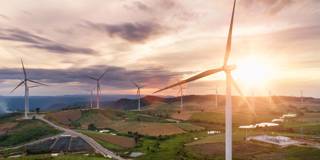With combined assets of more than $11 trillion, public development banks already play a significant role in the global economy. They should now increase their individual and joint activities further, in ways that even better aid the green and fair recovery the world urgently needs.
NEW YORK/PARIS/BEIJING/BRIGHTON – Major global threats – including the COVID-19 pandemic, climate change, and rising inequality – call for large-scale concerted action. The challenge facing policymakers today is to support big structural transformations that can make economies simultaneously more productive, more inclusive, and less carbon-intensive. Public development banks (PDBs) – at the local, national, subregional, regional, or interregional level – are key to helping governments finance a rapid recovery from the COVID-19 crisis, and to ensuring that economies serve people and the planet far better in the long run.

NEW YORK/PARIS/BEIJING/BRIGHTON – Major global threats – including the COVID-19 pandemic, climate change, and rising inequality – call for large-scale concerted action. The challenge facing policymakers today is to support big structural transformations that can make economies simultaneously more productive, more inclusive, and less carbon-intensive. Public development banks (PDBs) – at the local, national, subregional, regional, or interregional level – are key to helping governments finance a rapid recovery from the COVID-19 crisis, and to ensuring that economies serve people and the planet far better in the long run.